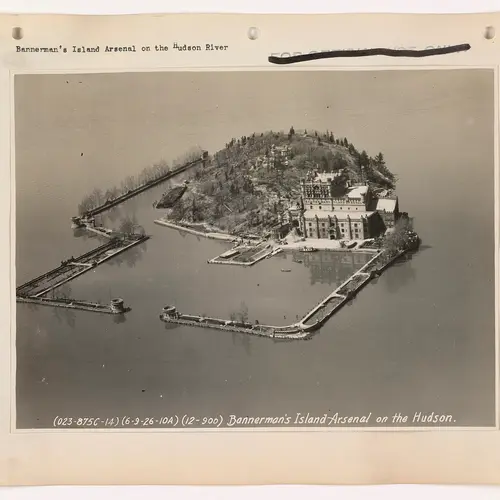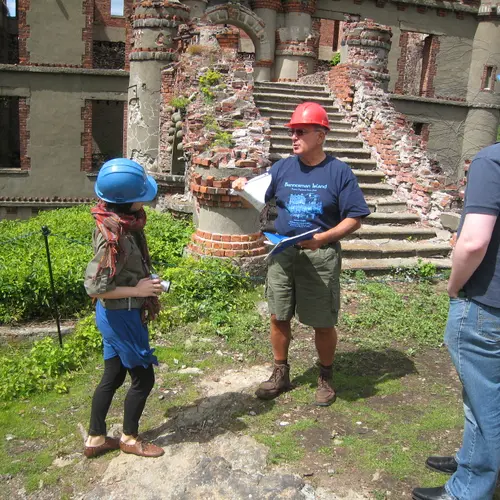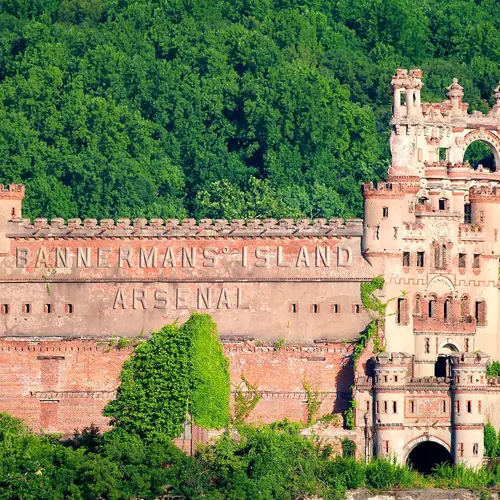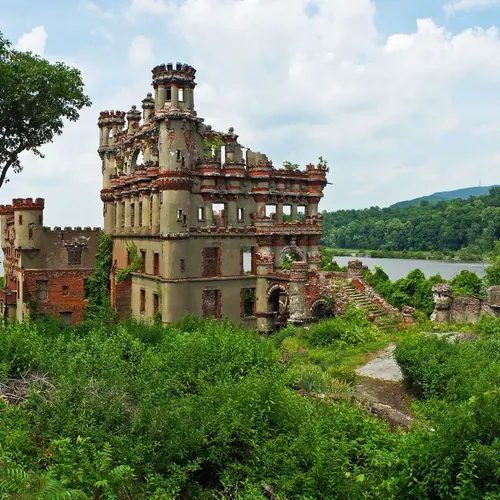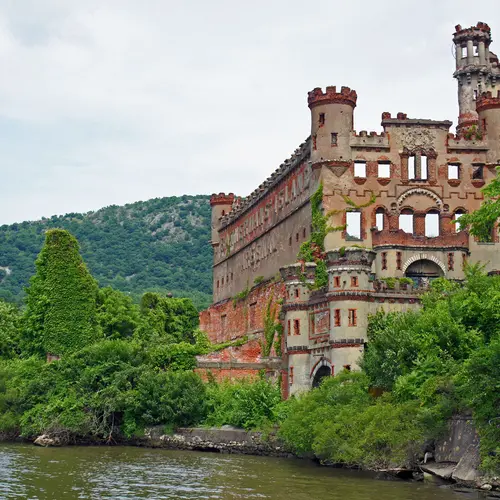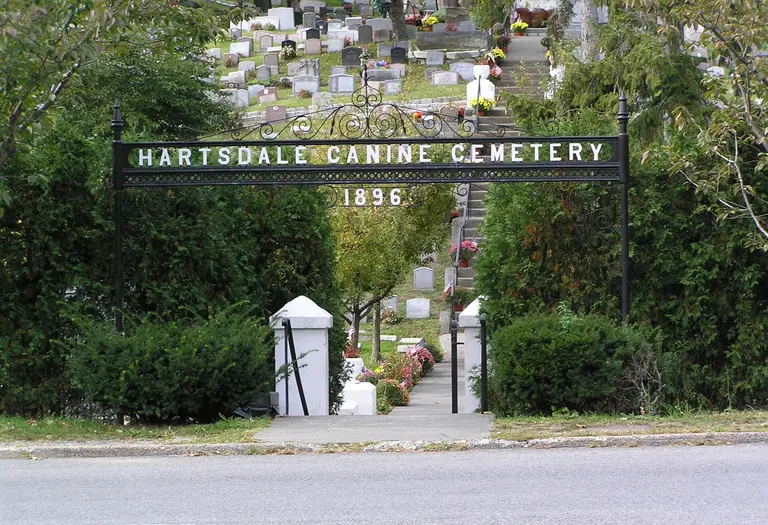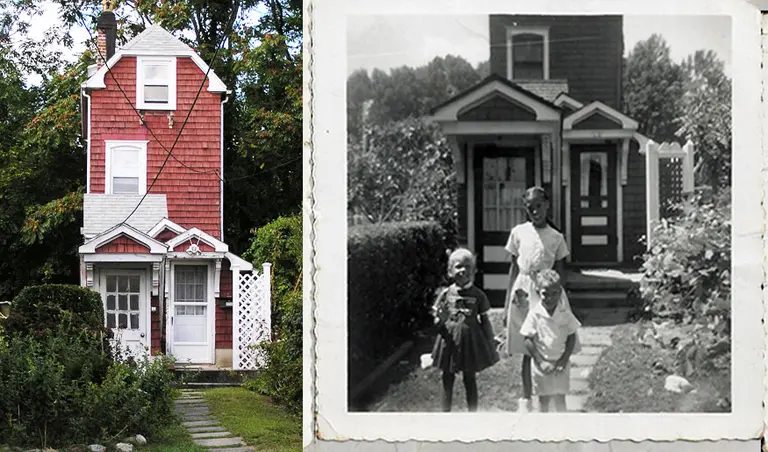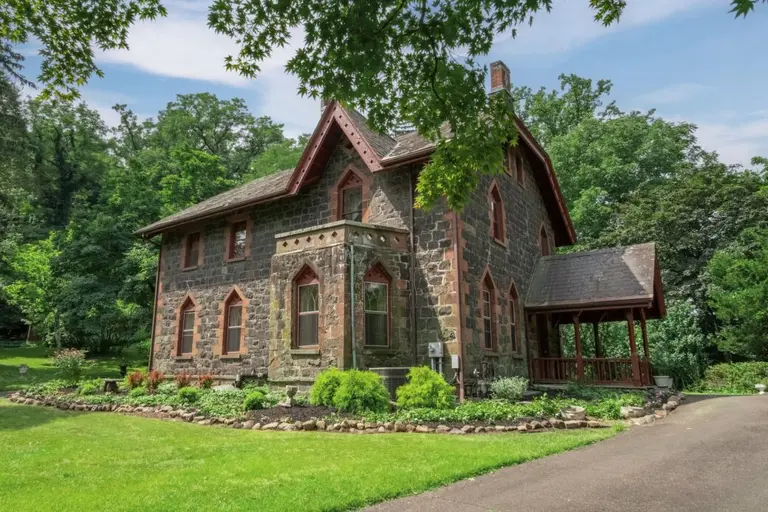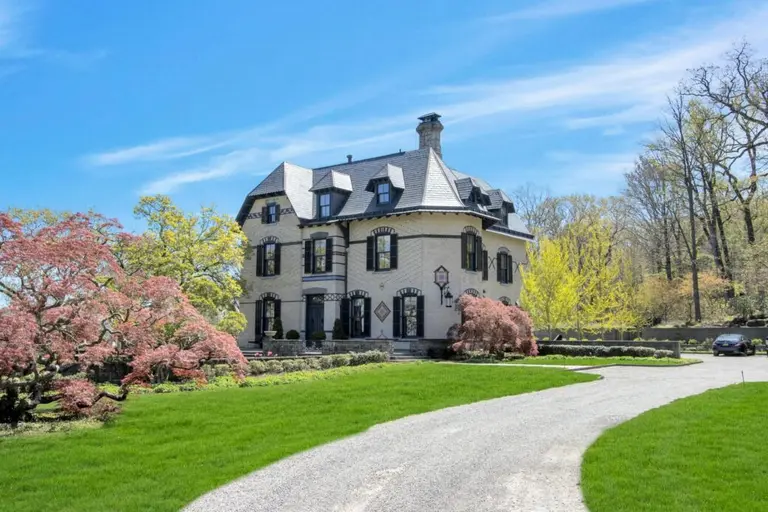The history of Hudson Valley’s abandoned Bannerman Castle and how to visit
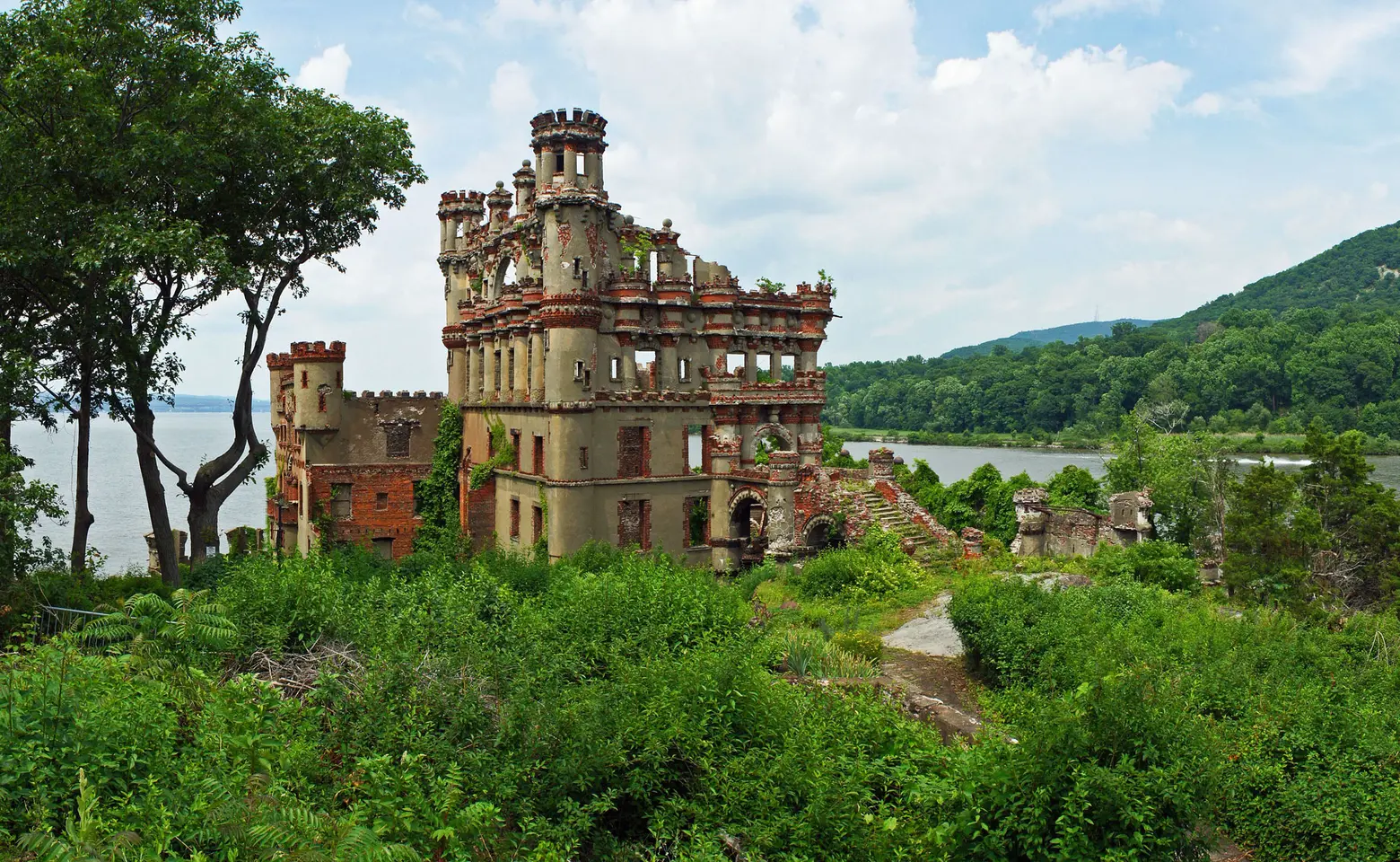
Have you ever noticed a castle in the middle of the water about 50 miles north of New York City? That’s Bannerman Castle, a long-abandoned arsenal turned adventurer’s hotspot. Stationed on Pollepel Island, the early 20th-century structure sat as an abandoned ruin from the time it caught fire in 1969 until 1992 when a resident from nearby Beacon, NY started the Bannerman Castle Trust and subsequently stabilized the structure and opened the island its famous relic up for tours. Ahead, we uncover the sensational history of Bannerman Caste and fill you in on how you can visit.
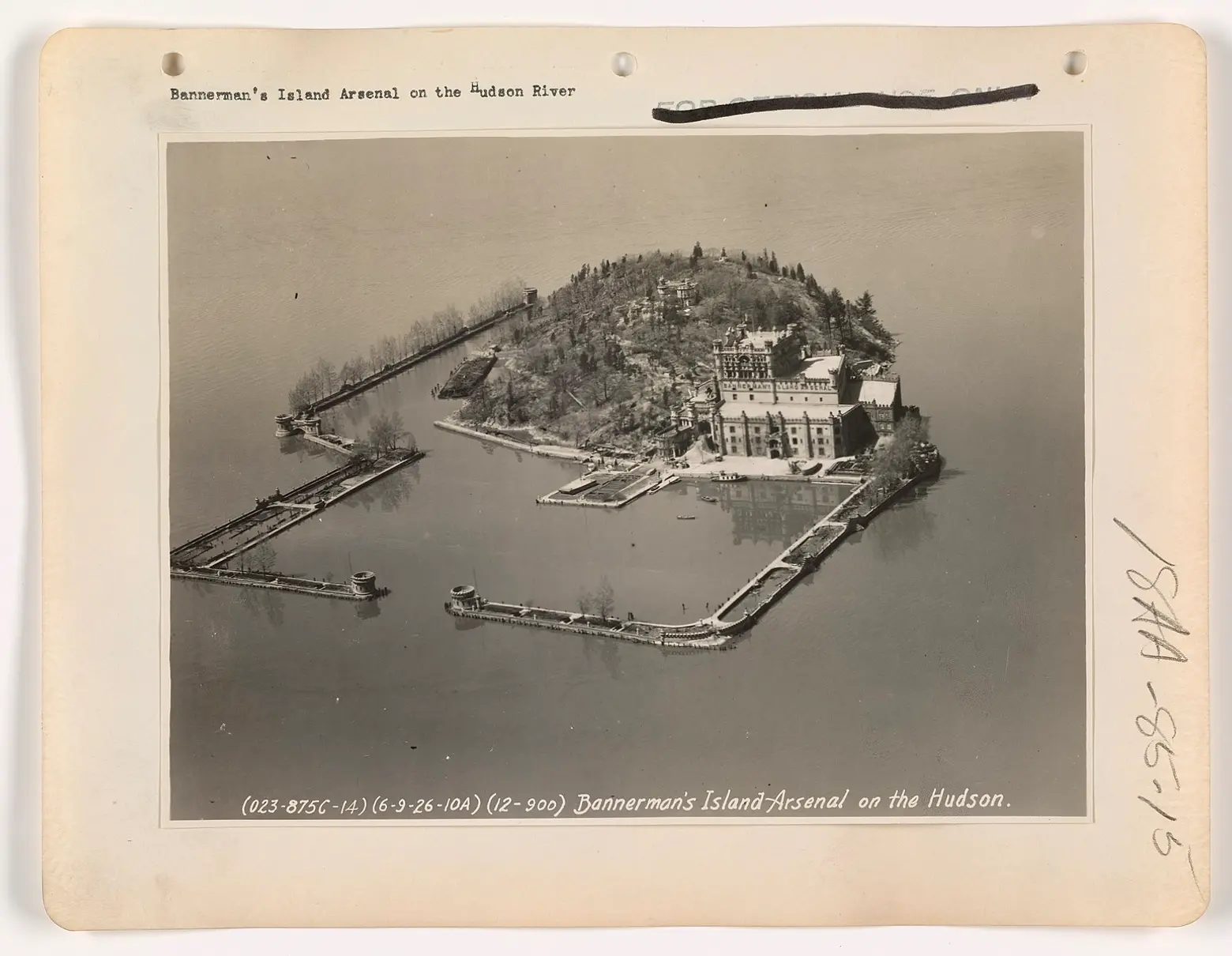
War Department aerial photo of Bannerman’s ca. 1941-1947, via the National Archives
Very often, when we’re talking about arms and ammunition in New York City, we’re talking about castles: consider Central Park’s Arsenal or the Park Avenue Armory. Bannerman is of that same ilk. Now owned by the state of New York, Bannerman is named for Francis Bannerman, a Scottish arms dealer raised in Brooklyn, who bought the island in 1900, and started construction on the castle the following year.
Bannerman started a military surplus business following the Civil War, while he was still in his teens. Soon, his company, called Bannerman’s, was the world’s largest buyer of military surplus, and Bannerman opened a massive showroom on Broadway and Broome Street, catering to volunteers in the Spanish American War. That conflict was a major windfall for Bannerman, and he purchased 90 percent of all captured Spanish arms. He then needed somewhere to store his giant cache, far from populated areas. Pollepel Island fit the bill because it was uninhabited and had been for most of its history, given that Native Americans in the Hudson Valley had considered the island haunted.
(Bannerman’s arms store wouldn’t be the first time that the island had seen its share of ammunition: During the American Revolution, the continental army had sunk iron-tipped logs around the island, hoping, to no avail, that their fierce points would damage the British fleet.)
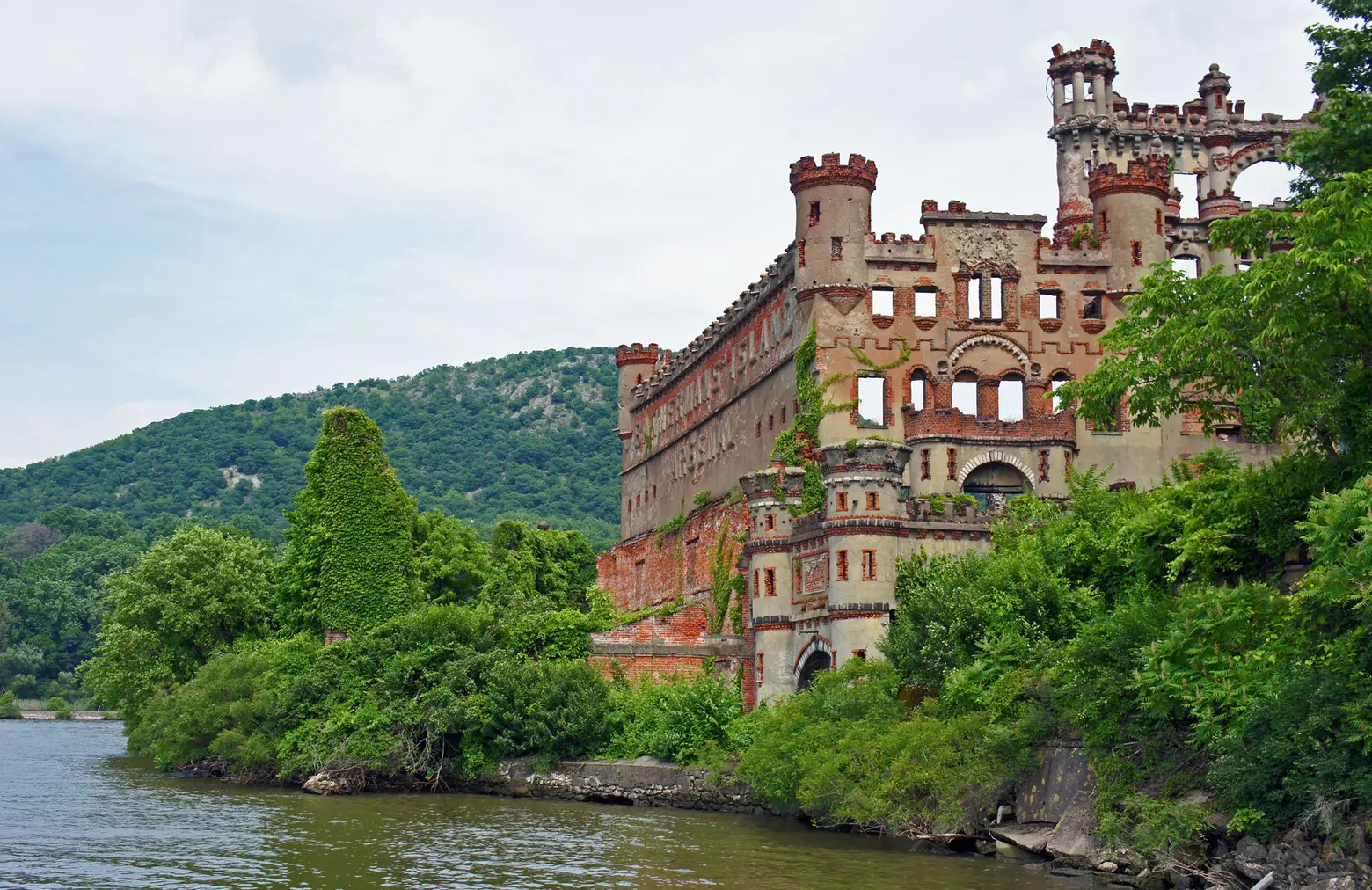
Photo by H.L.I.T via Flickr cc
When Bannerman bought the island in 1900, he set about designing his arsenal and storehouse in the style of the Baronial castles he had seen during trips to Scotland. The elaborate design included a suite of buildings including an arsenal, storerooms, and even a summer house with docks, turrets, and a moat. Bannerman himself took to landscaping the grounds.
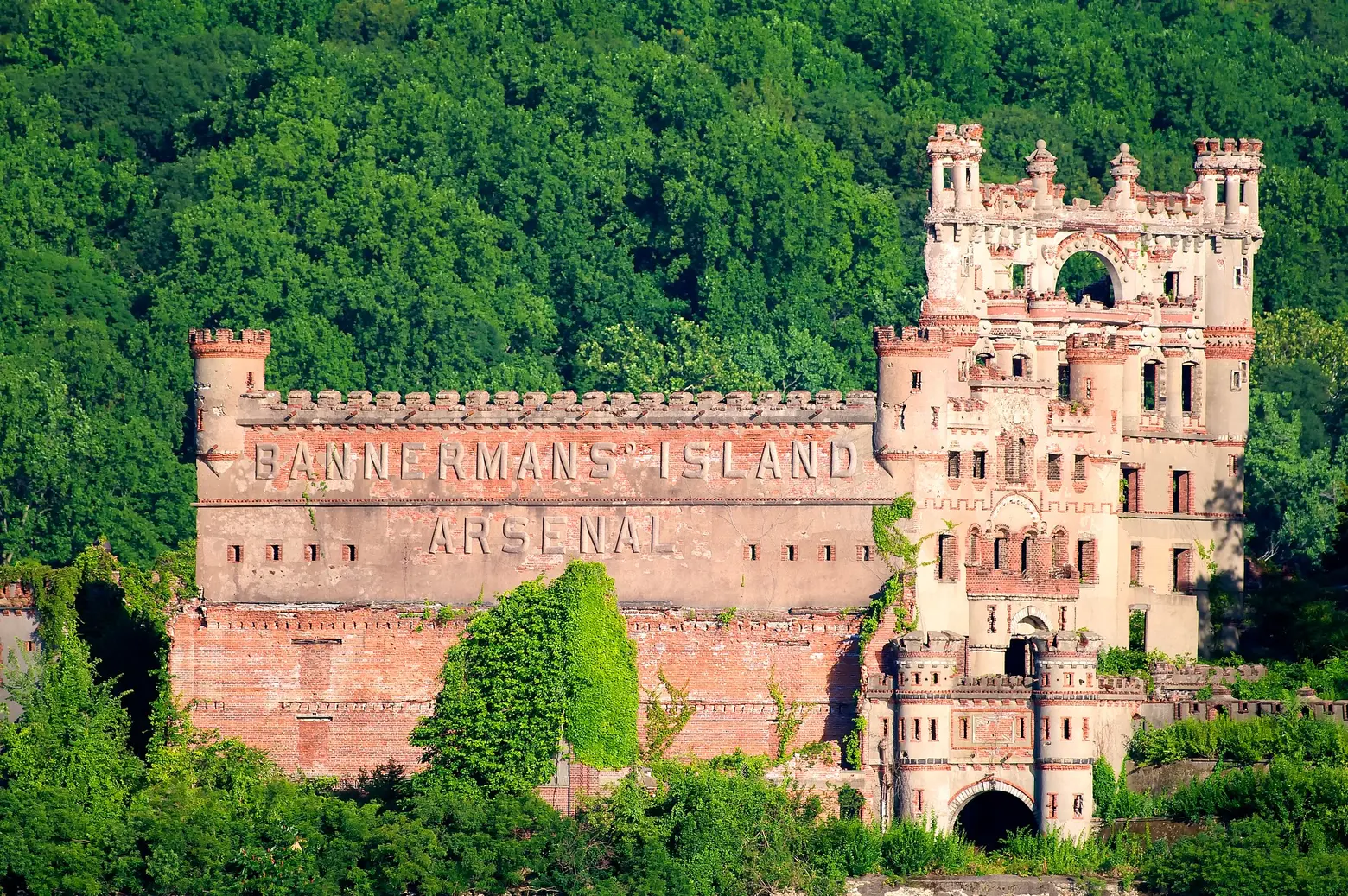 Photo by Nick Harris, via Flickr cc
Photo by Nick Harris, via Flickr cc
The castle, which bears Bannerman’s name, was a major advertisement for his business, which continued to thrive. He had so much inventory, in fact, that during World War I, he sold cannons, uniforms, and blankets to the U.S. government.
Construction of the castle persisted through the war, and it still wasn’t quite finished when Bannerman died in 1918. In 1920, the complex proved why it needed a home on an abandoned island: the powder house blew up. The explosion, triggered by 200 tons of shells and powder, damaged the castle’s edifice. Bannerman’s family continued living on the island until about 1930, after which time the castle began falling into neglect and disrepair. In 1969, another fire, now thought to have been arson, reduced the castle to a ruin.
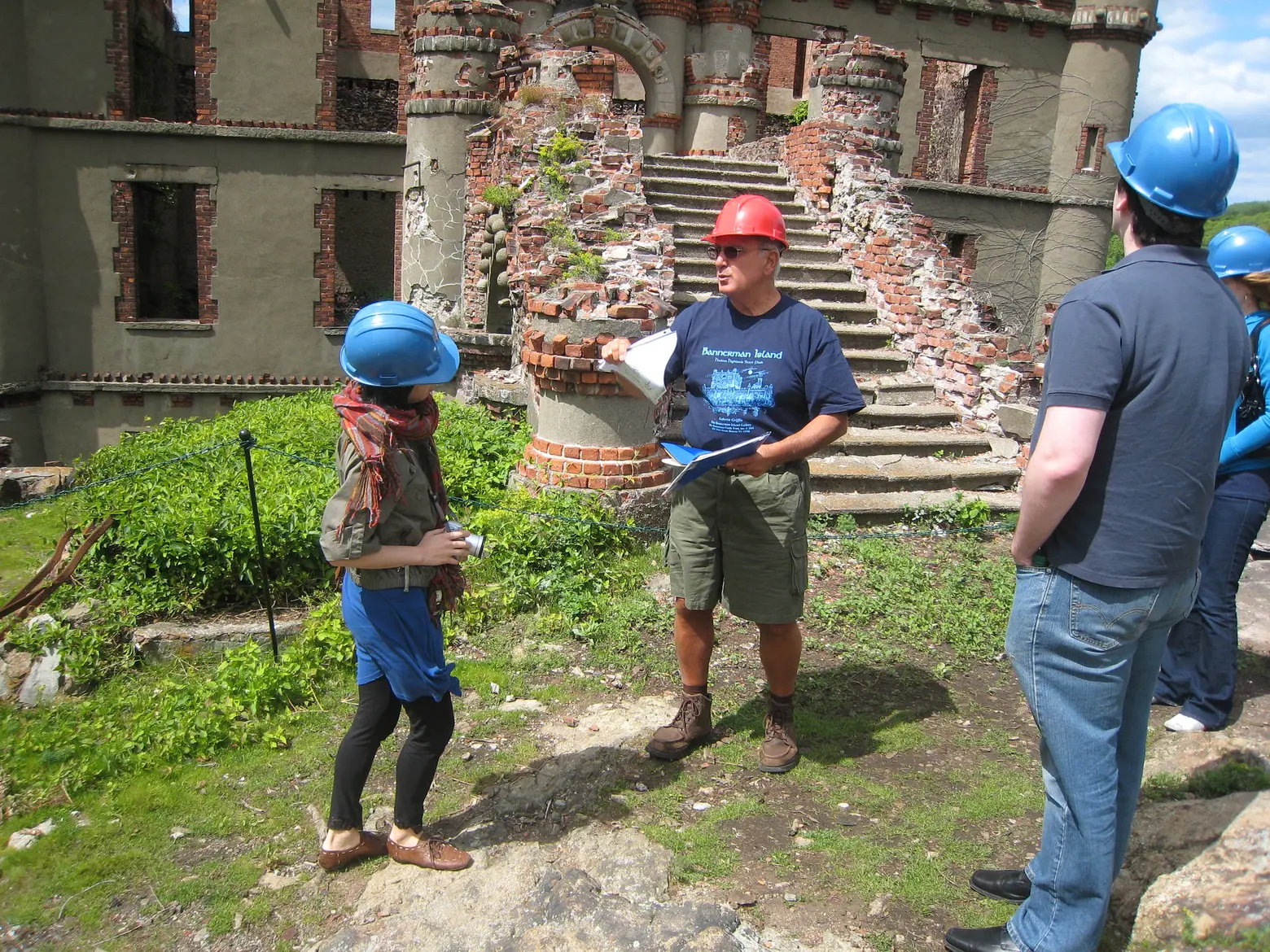 A Bannerman Island tour, photo by T. Carrigan via Flickr cc
A Bannerman Island tour, photo by T. Carrigan via Flickr cc
For decades, Bannerman remained one of New York’s most intriguing abandoned sites, often visited and photographed illegally by urban explorers and ruin-porn hunters. But since 1992, the island has been publicly accessible for tours. That year, Beacon, New York resident Neil Caplan founded the Bannerman Castle Trust and raised over a million dollars to stabilize the structure and maintain the island.
While the island is still “abandoned” in that it has no residents save a black rat snake named Frank, the Trust gives tours of the castle from May through October. Tours leave from either Newburgh or Beacon and are $40 for adults and $35 for children. You can also visit Bannerman on a variety of kayak tours and through a special Metro North package leaving from Grand Central. Beyond tour opportunities, the Trust also hosts movie nights, lectures, special dinners and theatrical performances in the shadows of the castle.
Editor’s note: The original version of this article was published on February 4, 2020, and has since been updated.
RELATED:
